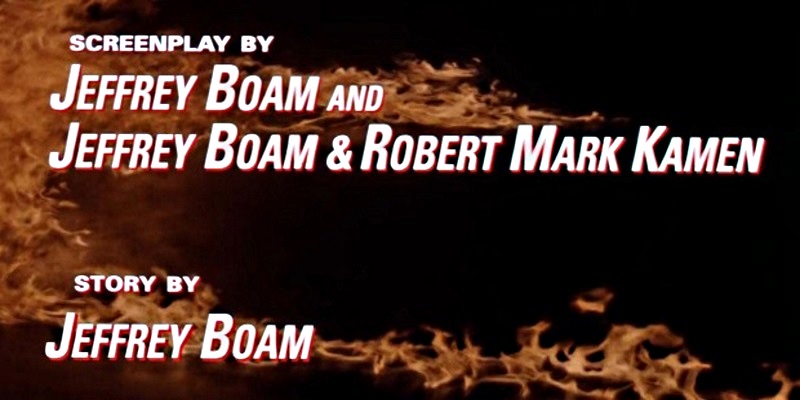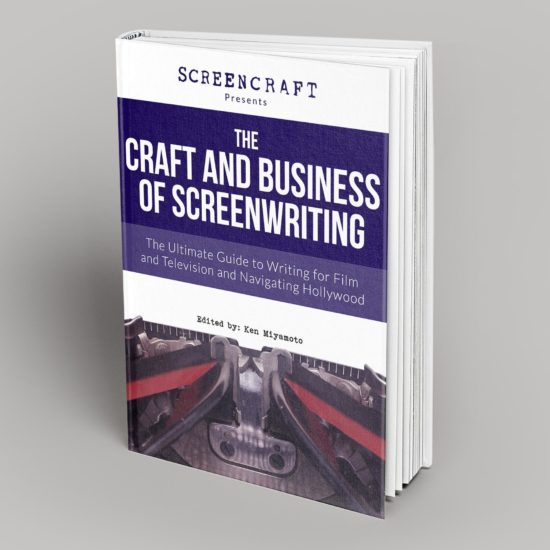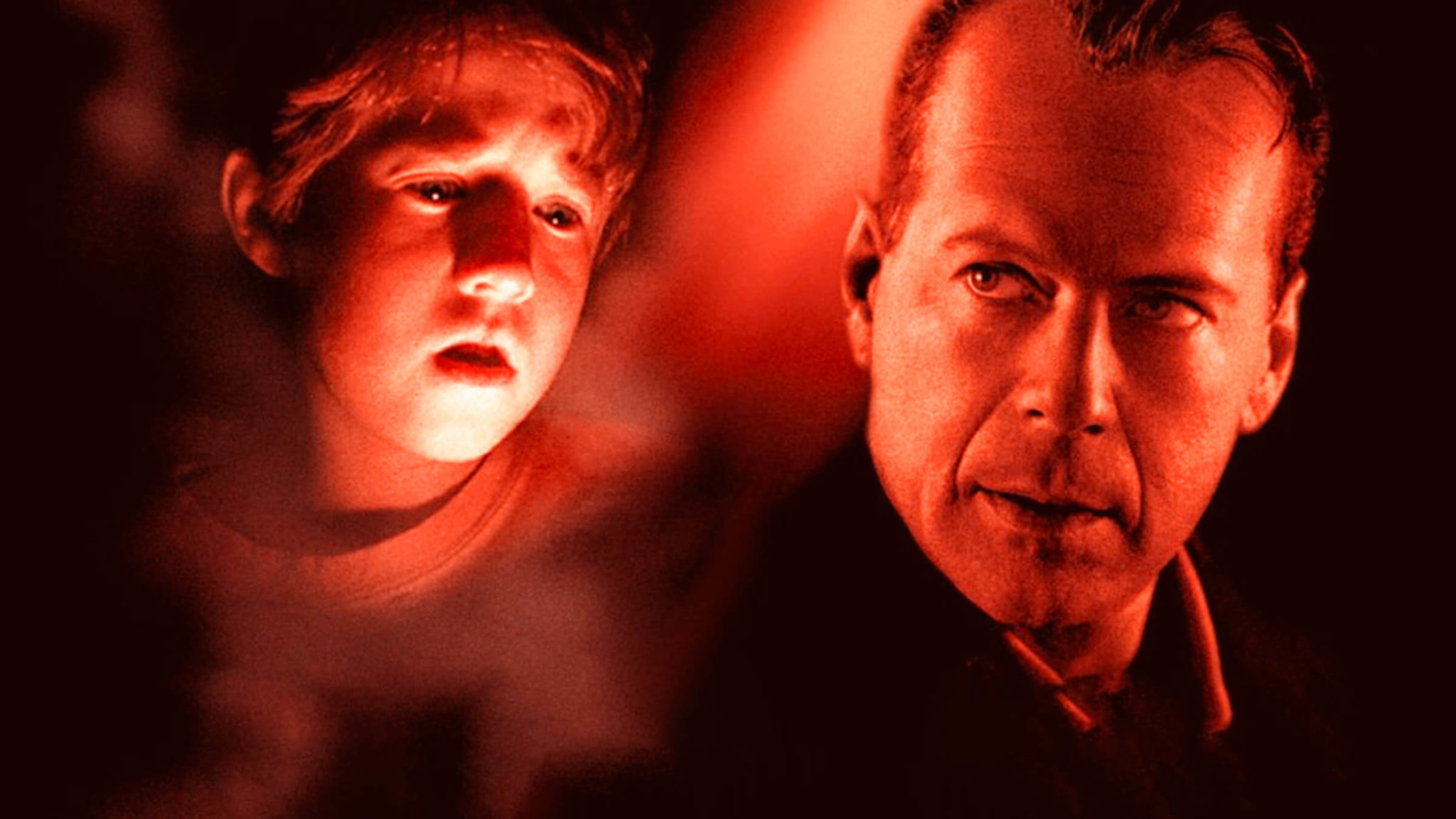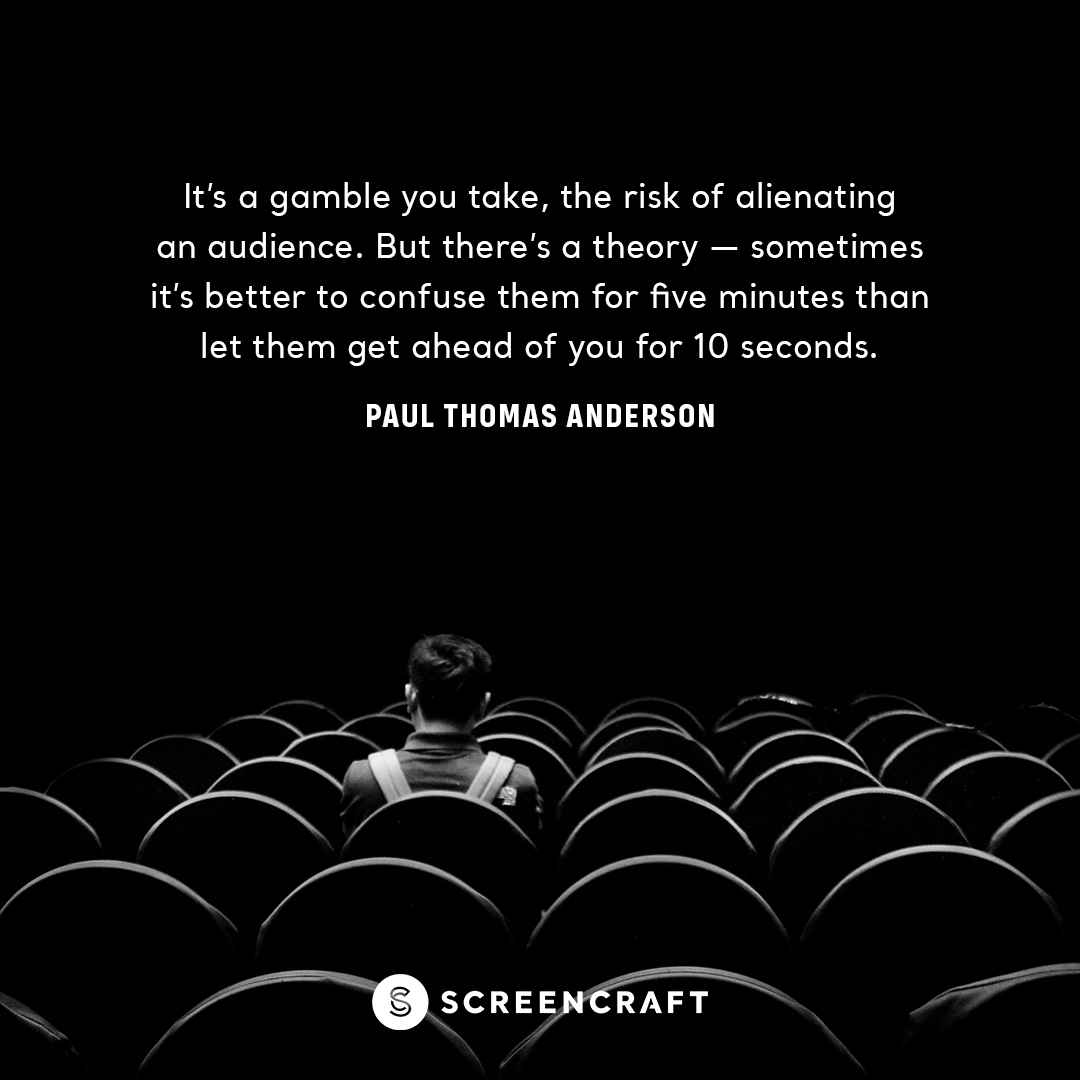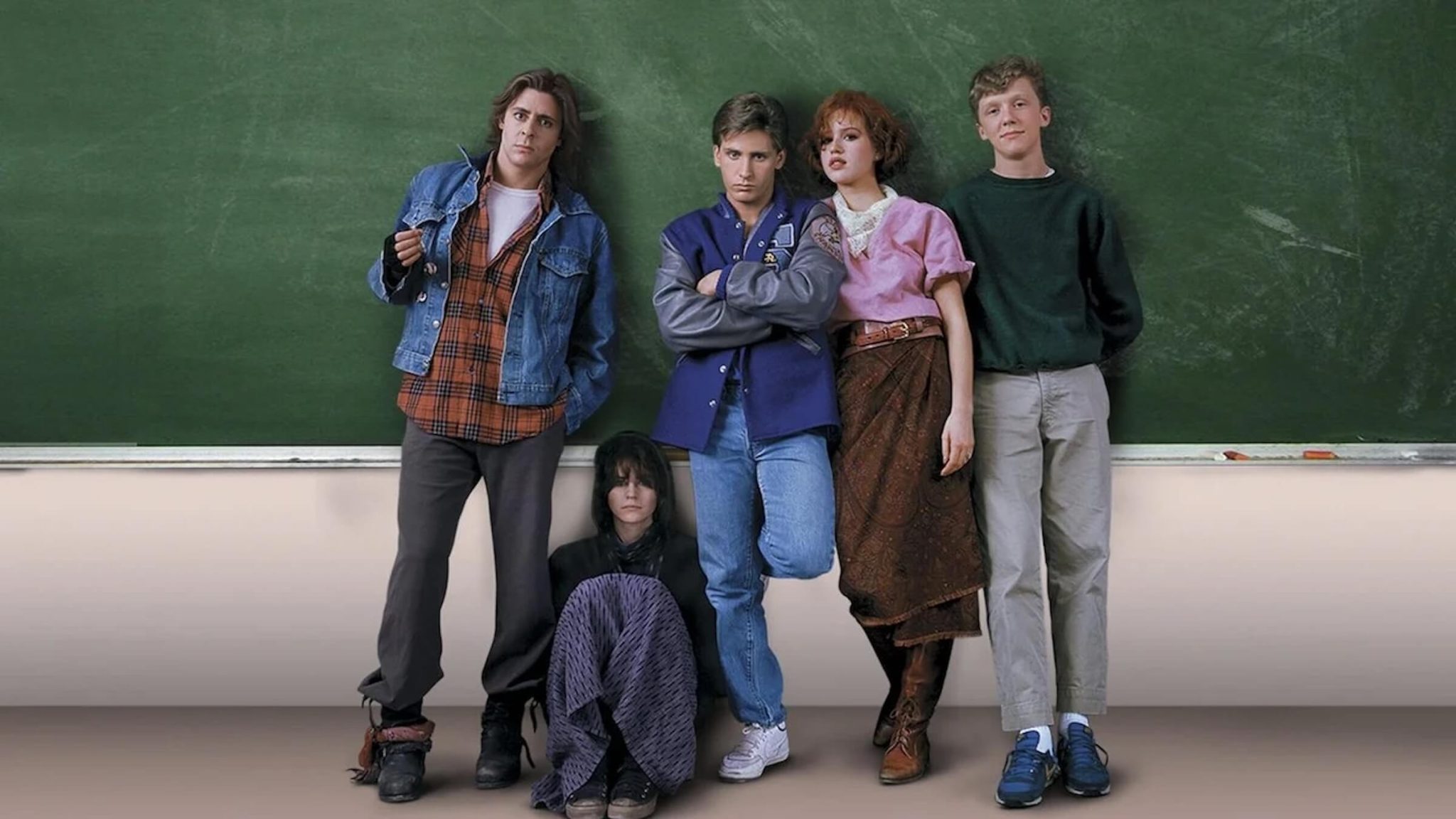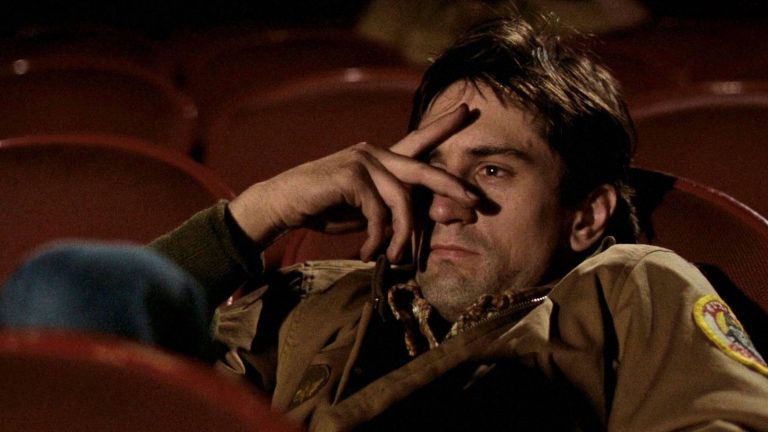How to Understand Confusing Screenwriter Onscreen Credits
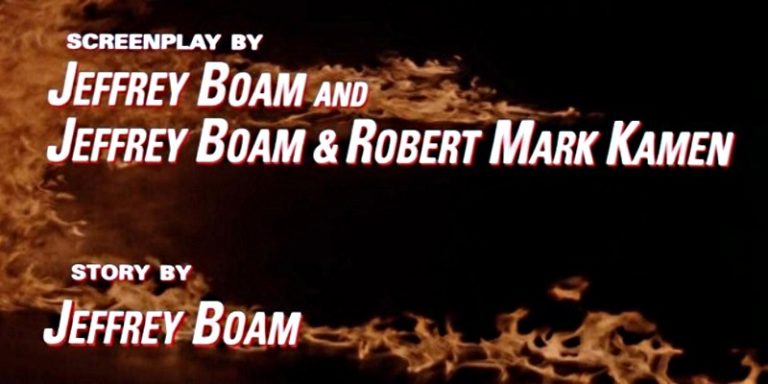
What are the differences between the many different types of screenwriting credits that you see onscreen?
"Why are some writers credited together by "&" while others are credited together by the word and?"
"What does "Story By" mean?"
"What's the difference between Written By, Screenplay By, and Screen Story By?"
These are just a few of the many questions that upcoming screenwriters — and movie audiences alike — ponder when they see the opening credits appear on the big screen.
Onscreen screenwriting credits can be confusing for those that have yet to be involved in the negotiation and contract goings-on in Hollywood — and to those that haven't taken time from their day to peruse through the thirty-one page WGA Screen Credits Manual.
The confusion grows as you hear that many Hollywood studio movies throughout cinematic history have had upwards of dozens or more writers that had their hand on the script at one time or another. Yet, in the end, only up to three individual screenwriters or writing teams are ever credited.
The Wizard of Oz is rumored to have had up to or beyond seventeen different screenwriters (as well as several different directors) working towards a final script at different times through the development process. But only three are credited.

Even more interesting is the story behind the writing of what many consider to be arguably the most celebrated screenplay ever written — Casablanca. The first writers assigned to the script were twins Julius and Philip Epstein. They left the project to work on another film — against the wishes of Warner Brothers — while the other credited writer, Howard Koch, was assigned. He wrote a reported thirty to forty pages.
Then the Epstein brothers returned a month later, and Koch's work was allegedly not used. According to the reported Warner Brothers budget for the film, the Epsteins were paid $30,416 ($549,096 in today's money) while Koch earned just $4,200 ($75,822).
The uncredited Casey Robinson assisted with three weeks of rewrites, and there have been ongoing claims that others did as well.

Screenwriters like Aaron Sorkin, Steven Zaillian, Kevin Smith, the late Carrie Fisher, and even Quentin Tarantino (he touched up dialogue for Crimson Tide) have made a career of uncredited work on screenplays.
Needless to say, onscreen credits don't always represent the writing that has been done on any given produced film.
But for those that get the credits, what do they all mean?
“Written by”
This credit is used when the writer or writing team is entitled to both the “Story by” credit (see below) and the “Screenplay by” credit.
If there is ever pre-existing source material for the screenplay — short story, novel, graphic novel, etc. — this credit cannot be used because it refers to the fact that the credited writer(s) is the originator of the film's story. Research material, depending upon how much is used, does not deprive the screenwriter of this credit.
“Story by”
If a signatory production company or studio purchased the story from a professional writer, the writer is entitled to this credit, even if they are later replaced by writers that are later credited with the overall final script. This happens a lot in Hollywood.
Another instance where this credit is used is when a screenplay is based upon a story that is a sequel to original work.
And it doesn't stop there. Many ask, "Why don't producers get any writing credit if they conceive a story and go out to hire writers for it?" They do, but it usually constitutes the writing of a treatment — at least. A prime example is Steven Spielberg and his involvement with the 1982 classic Poltergeist.
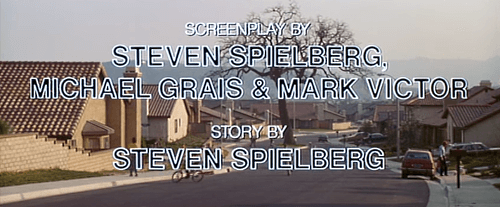
More than two writers may not share story credit.
"Screen Story by"
This credit is utilized much less these days. When and if you do see it, the credit refers to a writer that has taken previous source material and conceptualized a new and different story from it, using that source material only as a springboard.
You only really find this as a result of arbitration. Most of the time you'll see the author of the source material get credit that specifies the specific platform — “From a Play by,” “From a Novel by,” “From a Saturday Evening Post Story by,” “From a Series of Articles by,” “Based
on a Story by,” etc. — and then the actual screenwriter will get a "Screenplay by" credit, or any variation mentioned above.
"Adaptation by"
This is another credit that you won't see much these days. The Guild tries to limit the number of credits as much as they can. "Adapted by" has been used, but only as a result of arbitration when a writer has contributed to the direction of a screenplay without having qualified for "Screenplay by" credit.
"Screenplay by"
This is the most widely used screenwriting credit today. Screen credit for a screenplay cannot be shared by more than two writers, with exception to certain cases where names of three writers or the names of writers constituting two writing teams may be used. That's usually the result of arbitration when there are a handful of writers — three individual screenwriters or a combination of different screenwriters and writing teams (writing teams count as on credit) — that have contributed to 33% or more of the screenplay.
That percentage is significant for screenwriting credit. If you are a screenwriter that was hired for a rewrite, but the final shooting draft of the script uses 32% or less of what you contributed after other writers were brought in, you won't be eligible for a screen credit — even if some of your dialogue, scenes, sequences, and character names are used. You have to make that 33% cut.
Ampersand (&) vs. And
When the word and is found in between the names of two or three different screenwriters, that credit is identifying two or three different writers that were attached to the project during separate drafts. In some cases, those writers could have worked together to form the final draft, but usually, this points to different screenwriters attached at different times for various drafts.
When you see the ampersand symbol between screenwriter names, that symbol is connecting them as a writing team.
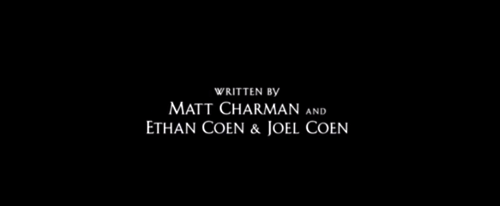
Order of Names
The most substantial contributors are usually featured first unless the prearranged order is dictated by the screenwriters' contracts beforehand. When in doubt as to the exact percentage of contribution, or if that percentage is deemed as equal, the names are listed alphabetically.
Can a Studio Buy a Script and Not Credit the Original Writer?
Decades ago, this could and likely did happen. However, the guild now ensures irreducible story minimum. With an original screenplay —screenplays which are not based on source material and on which the first writer writes a screenplay without there being any other intervening literary material by another writer pertaining to the project — the first writer shall be entitled to no less than a "Story by" credit.
Can a Screenwriter Take Their Name Off of the Credits?
Professional screenwriters have seen their original work — or that of which they've contributed to — turned into something that they may not want their name attached to. It happens.
You can request to pull your name from the credits, but you have to act fast before arbitration has designated the onscreen credits after the studio submits them for print and marketing preparation. Once the credits have been assigned, there is no going back. But keep in mind that if a screenwriter does this, it will result in loss of any and all rights accruing from receipt of writing credit.
In that case, the best thing to do is opt for the use of a pseudonym rather than withdrawing from credit. That way, this will not result in a forfeiture.
There are some specific requirements for using a pseudonym, however:
- According to The Minimum Basic Agreement of the Guild, any writer who is entitled to credit on the screen and who has been paid, or is guaranteed payment of, less than two hundred thousand dollars ($200,000) for writing services or literary materials relating to the particular motion picture shall have the right to be accorded credit on the screen, in advertising or otherwise, in a reasonable pseudonymous name
- A writer must exercise this right within five business days after final determination of writing credits
- A writer must register the pseudonym with the Guild by sending a written notice to the Membership Department with the writer’s Social Security number, if any.
- A pseudonym may not duplicate the name or pseudonym of another writer or the name of a public figure
How are Percentages and Contributions to the Script Determined?
It's not about counting script lines and pages. Arbiters are tasked to take into consideration these four elements in determining whether a screenwriter is entitled to screenplay credit:
- Dramatic construction
- Original and different scenes
- Characterization or character relationships
- Dialogue
Needless to say, it takes professionals to assess such differences between drafts. There are cases where all of the dialogue has been changed, but the actual scenes and characters are the same. In turn, there are cases where just one section of the script — first act, second act, third act, major sequences, etc. — is so substantial that it has changed the screenplay as a whole.
Lesson-learned for screenwriters? Be sure that when you are on assignment, you are keeping excellent records of what material you are given, the different drafts you write, the changes requested, and the changes you make. Then compare and contrast with further drafts you have access to from additional writers attached to the project, or what you see within the finished product. Read ScreenCraft's What Are Your Protected Rights as a Screenwriter? for more on that!
In the end, it is up to the screenwriter to make sure that their screenwriting credit is administered fairly. While the guild's arbitration process — as well as the studio's submission process for onscreen credits — is there to recognize the importance of each writers’ contribution to the screen, the screenwriter must always keep a keen eye out. Most have it down to a science, mind you, but it doesn't hurt screenwriters to do their part just in case discrepancies arise.
So, for screenwriters and movie lovers alike, those are the clear-cut explanations of those sometimes confusing onscreen screenwriting credits you see as the lights go down and the opening credits begin to appear.
Ken Miyamoto has worked in the film industry for nearly two decades, most notably as a studio liaison for Sony Studios and then as a script reader and story analyst for Sony Pictures.
He has many studio meetings under his belt as a produced screenwriter, meeting with the likes of Sony, Dreamworks, Universal, Disney, Warner Brothers, as well as many production and management companies. He has had a previous development deal with Lionsgate, as well as multiple writing assignments, including the produced miniseries Blackout, starring Anne Heche, Sean Patrick Flanery, Billy Zane, James Brolin, Haylie Duff, Brian Bloom, Eric La Salle, and Bruce Boxleitner. Follow Ken on Twitter @KenMovies
For all the latest ScreenCraft news and updates, follow us on Twitter, Facebook, and Instagram.
Tags
Get Our Screenwriting Newsletter!
Get weekly writing inspiration delivered to your inbox - including industry news, popular articles, and more!


